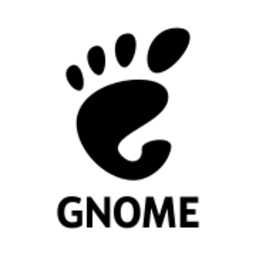
![]()
GNOME Terminal
The GNOME Terminal is a powerful tool for managing the GNOME desktop and the Linux installation.
Alternatives to GNOME Terminal
Missing a software in the list? We are always happy if you help us making our site even better.
GNOME Terminal Reviews
We have 1 review for GNOME Terminal. The average overall ratings is 4.0 / 5 stars.
Overall Opinion: GNOME is a popular desktop environment for the Linux operating system. One of the powerful tools that comes with the GNOME desktop is the "Terminal" program. Any functionality within the GNOME desktop environment may be accessed using Terminal, and there are a few things that can only be done via Terminal. The Terminal application opens a window and presents the user with a command-line prompt. The user can simply type the desired command in the command line and press "Enter" to run the command. It's that easy! There is extensive documentation available on the Internet for the commands available via the Terminal, and Linux comes with "man pages" (manuals) pre-installed that the user can access from the Terminal. Simply type "man", then space, then the name of the command and ENTER, and a screen will come up with information about the command. The user can configure the Terminal application to fit his or her preferences, with regard to the cursor, font, color scheme and text size. The user can configure terminal to open full-screen or windowed.
Pros: The GNOME Terminal application is a very powerful tool that can be used to configure any aspect of the GNOME desktop environment or the Linux operating system. There are many basic commands which are easier to run from the command line than to find in the GNOME menus. Using the Terminal inside of a Linux desktop makes you look extremely knowledgeable. Even using a few basic commands may make you appear to be a Linux guru.
Cons: Many Terminal commands hearken back to the early days of Linux, and the user may not intuitively understand which command performs the desired functionality. For example, "cp" is used to copy files -- which is fairly straight-forward -- but "rm" is used to delete files. Each terminal command typically has many "switches" that can be used to control the functionality of the command. Unless the user has extensive knowledge of the switches and parameters available for the command, he or she may not understand what the command is capable of doing. Most users of a graphical user interface, such as the GNOME environment, aren't used to using a command-line interface such as Terminal, and may prefer to access the same functionality via the GUI.
Screenshots
GNOME Terminal Videos
When you will install gnome-shell on your ubuntu i.e 17.04 you will certainly feel like " the future is now!" :p I tried to give you guys a short review, and forget my mistakes as newbie xD...
Comments
About This Article
This page was composed by Alternative.me and published by Alternative.me. It was created at 2018-04-28 05:01:38 and last edited by Alternative.me at 2020-03-06 07:50:38. This page has been viewed 10157 times.